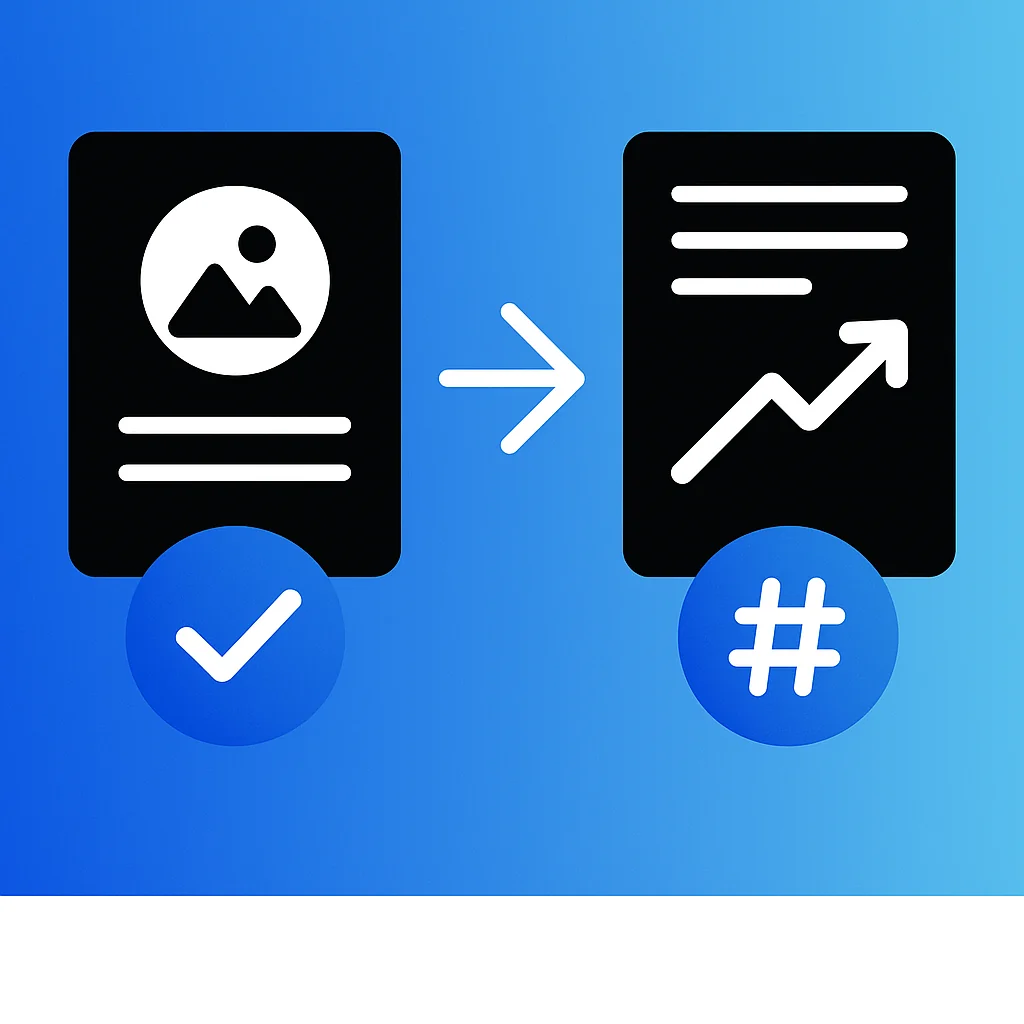Most marketers treat content strategy like an either-or decision. Should you focus on evergreen content that stands the test of time, or jump on trending topics for quick wins?
The answer is both.
A strategic content mix combines the steady growth of evergreen material with the visibility spikes of trending topics. Evergreen content supports sustained growth, drives steady traffic, and requires less frequent updating, whilst trending content capitalises on current interests, offering quick visibility and high engagement.
Think of evergreen content as your foundation. It builds authority, attracts backlinks, and generates consistent organic traffic months after publication.
Trending content, meanwhile, acts as your amplifier. It captures immediate attention, drives short-term traffic spikes, and positions your brand within current conversations.
The most effective content strategies don’t choose between these approaches. They integrate both types strategically, typically following a 70/30 or 80/20 ratio favouring evergreen material.
This guide breaks down exactly what each content type offers, when to use them, and how to create a balanced strategy that maximises both immediate impact and long-term value.
What is Evergreen Content?
Evergreen content addresses questions and needs that remain relevant regardless of when someone discovers it.
Unlike news articles or trend pieces, evergreen material doesn’t expire. A well-crafted guide written today can continue attracting visitors and generating value two years from now.
This content type includes tutorials, how-to guides, foundational concept explanations, and comprehensive resource articles. The key characteristic is timelessness. The information stays useful and accurate without constant updates.
Characteristics of Evergreen Content
Evergreen pieces share several defining traits that set them apart from other content types.
They address fundamental questions rather than temporary situations. Whilst a trending article might explore “2024’s biggest marketing shake-ups”, an evergreen piece asks “How do search rankings work?”
The subject matter doesn’t depend on seasons, current events, or time-sensitive information. Statistics and specific dates appear sparingly, only when they support broader principles.
Search volume for evergreen topics remains relatively consistent throughout the year. These aren’t topics that spike during particular months then disappear.
Beginner-level evergreen content is typically the most popular, as it serves audiences searching for foundational knowledge.
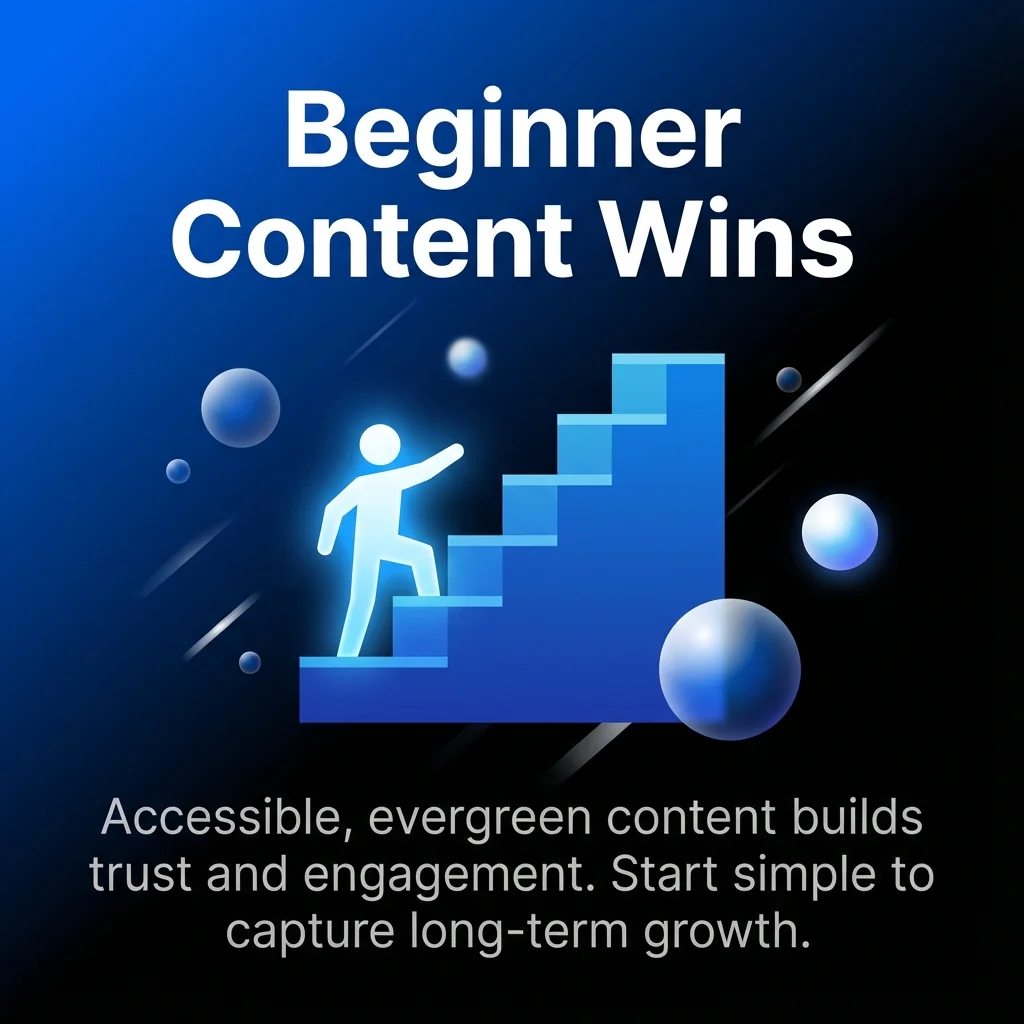
Common Evergreen Content Formats
Several content formats naturally lend themselves to evergreen strategies.
Comprehensive guides that cover topics thoroughly from multiple angles create lasting reference material. These “ultimate guides” become go-to resources that readers bookmark and return to repeatedly.
Tutorial content showing step-by-step processes maintains value as long as the underlying process remains relevant. Even when specific tools change, the fundamental approach often stays useful.
Glossary and definition pages serve searchers looking to understand industry terminology. These pages answer basic questions that new audiences consistently search for.
Problem-solution articles addressing recurring challenges provide ongoing value. If the problem persists, the solution content remains relevant.
Comparison content evaluating different approaches or methodologies continues serving readers making similar decisions over time.
What is Trending Content?
Trending content captures attention by addressing what’s happening right now.
This content type thrives on timeliness. It responds to current events, viral phenomena, breaking news, or seasonal interests that generate immediate search volume and social engagement.
The value proposition is different from evergreen material. Trending content doesn’t aim for long-term relevance. Instead, it capitalises on temporary spikes in audience interest.
When executed well, trending content can drive significant short-term traffic, increase brand visibility, and position you as a timely voice within your industry.
Characteristics of Trending Content
Trending pieces have distinct qualities that differentiate them from evergreen material.
Time sensitivity is the defining feature. The content is specifically tied to a moment, event, or temporary phenomenon. Its relevance has an expiration date.
Search volume follows predictable patterns. Interest spikes dramatically during the trend’s peak, then drops off as public attention shifts elsewhere.
Social engagement potential is typically higher with trending content. People actively discuss, share, and respond to material about current topics.
Content creation requires speed. By the time you publish, the trending moment might have passed. Quick turnaround becomes essential for capturing the opportunity.
Common Trending Content Formats
Certain content formats naturally align with trending topics.
News analysis and commentary responds to breaking developments in your industry. These pieces add context and perspective to current events.
Seasonal content addresses predictable annual interests. Holiday guides, tax season tips, and back-to-school content follow recurring patterns.
Event coverage captures attention around conferences, product launches, or industry announcements.
Viral topic responses engage with social media trends, viral challenges, or cultural moments relevant to your audience.
Newsjacking content connects your brand to major news stories through relevant angles and perspectives.
Benefits of Evergreen Content
Now that you understand what evergreen content is, let’s examine why it forms the foundation of effective content strategies.
The primary advantage lies in compounding returns. Whilst trending content delivers immediate but temporary results, evergreen pieces generate value continuously over extended periods.
Long-Term Organic Traffic
Evergreen content creates reliable traffic sources that persist for months or years after publication.
Search engines reward content that consistently satisfies user intent. As your evergreen pieces accumulate page views, time-on-page metrics, and return visits, they signal value to search algorithms.
This creates a positive feedback loop. Strong performance improves search rankings, which drives more traffic, which further reinforces the content’s authority.
The traffic doesn’t require ongoing promotional effort. Once ranked, evergreen pages continue attracting visitors without additional marketing spend.
SEO Authority and Backlinks
Evergreen content attracts backlinks over time, further boosting visibility and SEO authority.
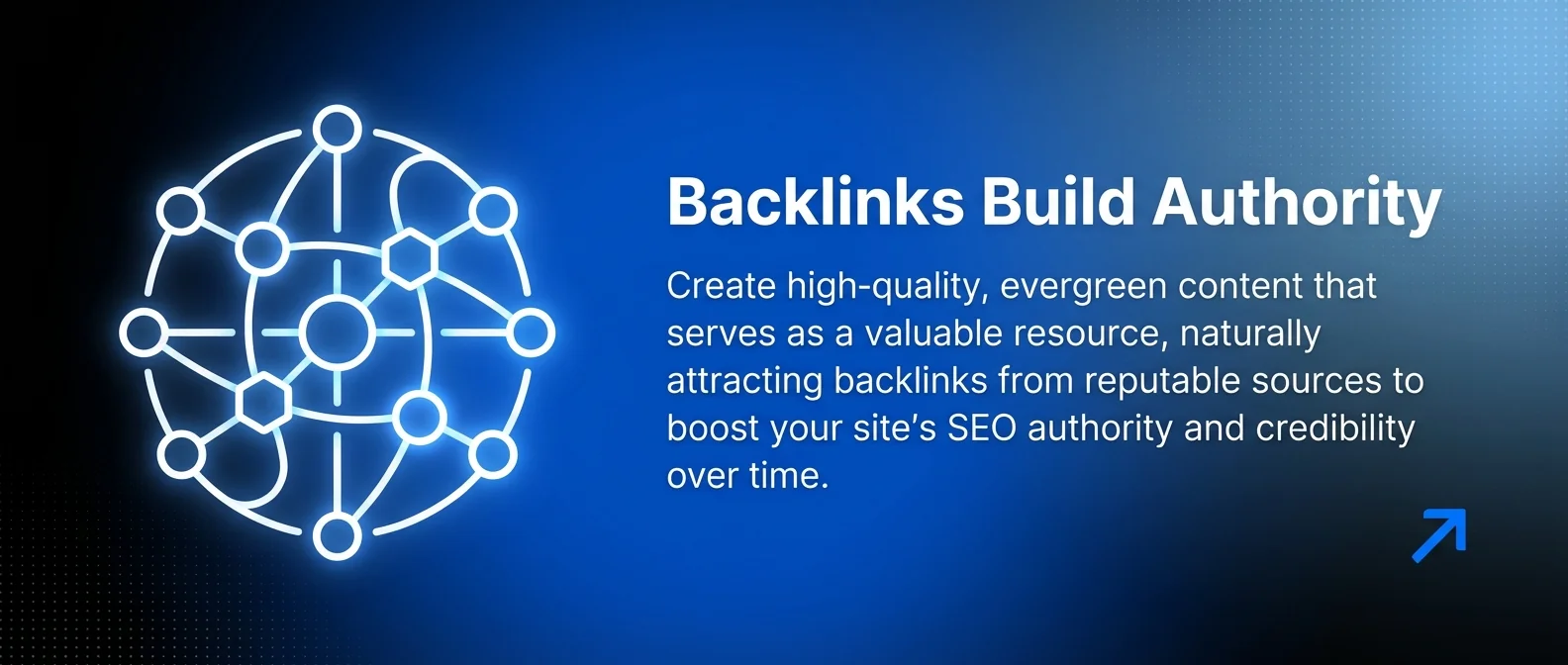
Comprehensive guides and valuable resources become reference material that other content creators naturally link to. Each backlink strengthens your domain authority and improves rankings across your entire site.
This link-building happens organically, without outreach campaigns. Quality evergreen content earns citations because it provides genuine value to other creators and their audiences.
Search engines view these natural backlinks as trust signals, reinforcing your content’s position in search results.
Cost Efficiency
The economics of evergreen content favour long-term value creation.
Whilst the initial investment might be substantial, producing one comprehensive evergreen piece, the content continues generating returns for years.
Compare this to trending content, which requires constant creation to maintain traffic levels. Evergreen material needs occasional updates rather than complete replacement.
This efficiency allows you to allocate resources strategically, investing in foundational content that compounds over time whilst selectively pursuing trending opportunities.
Audience Trust and Authority
Evergreen content positions you as a reliable knowledge source.
When audiences consistently find valuable, accurate information on your site, they develop trust. They return when new questions arise and recommend your content to others.
This authority extends beyond individual pieces. A library of strong evergreen content signals expertise across your topic area, strengthening your brand’s overall credibility.
Challenges of Evergreen Content
Despite its advantages, evergreen content presents distinct challenges that require consideration.
Understanding these limitations helps you set realistic expectations and allocate resources appropriately.
Delayed Results
Evergreen content rarely delivers immediate traffic.
Search engines need time to discover, index, and evaluate your content. Building the backlink profile that supports strong rankings happens gradually.
This delayed gratification can be frustrating, particularly when you need quick wins to demonstrate marketing value.
Patience is essential. The content you publish today might not show significant results for three to six months.
Competitive Saturation
Popular evergreen topics often face intense competition.
Because these subjects generate consistent search volume, many sites create content targeting the same keywords. Breaking into the top search positions requires exceptional quality and strategic promotion.
Established sites with strong domain authority already occupy many evergreen topic rankings. Displacing them demands significant effort and differentiation.
Maintenance Requirements
Whilst evergreen content needs less updating than trending material, it isn’t truly “set and forget”.
Information accuracy must be verified periodically. Industry practices change, tools evolve, and best practices shift.
Search algorithms favour freshness signals. Content that receives periodic updates often performs better than identical material that remains unchanged for years.
This maintenance, though less intensive than constant new creation, still requires planning and resource allocation.
Advantages of Trending Content
With the evergreen foundation established, let’s explore how trending content complements your strategy.
Trending pieces serve different strategic objectives, offering benefits that evergreen material cannot match.
Immediate Visibility
Trending content can generate substantial traffic within hours or days of publication.
When you capture a trending topic early, search engines and social platforms amplify your content to meet surging demand. This creates traffic spikes that far exceed typical evergreen performance.
The visibility extends beyond search. Social sharing accelerates as audiences engage with timely, relevant material.
This immediate impact makes trending content valuable for brand awareness campaigns and time-sensitive marketing objectives.
Audience Engagement
Trending topics naturally generate higher engagement rates.
People actively discuss current events and viral phenomena. They comment, share opinions, and participate in conversations around trending subjects.
This engagement creates opportunities for community building and audience interaction that evergreen content rarely matches.
The conversation momentum helps expand your reach as engaged audiences share your content within their networks.
Topical Authority Signals
Regularly publishing relevant trending content demonstrates industry awareness.
Search engines increasingly value topical authority, the perception that you comprehensively cover your subject area. Contributing timely perspectives on current developments reinforces this authority.
Audiences also appreciate brands that stay current. Trending content signals that you’re actively engaged with industry changes rather than publishing generic advice.
New Audience Discovery
Trending topics attract audiences who might not otherwise discover your content.
Search volume spikes bring new visitors searching for information about current events. These searchers might not have existing awareness of your brand.
Whilst not all trending traffic converts to long-term followers, some percentage will explore your other content and become regular readers.
This audience expansion effect makes trending content valuable for growth strategies.
Challenges of Trending Content
Trending content’s advantages come with significant trade-offs that impact strategy decisions.
These challenges explain why trending topics alone cannot sustain long-term content marketing success.
Short Lifespan
Trending content value decays rapidly.
What generates thousands of visitors this week might be completely irrelevant next month. The traffic spike is temporary, and ongoing value is limited.
This short lifespan means constant content creation is necessary to maintain traffic levels. You’re essentially on a content treadmill.
The effort invested in trending pieces rarely compounds. Each new trend requires new content.
Resource Intensity
Maintaining a trending content strategy demands significant resources.
You need systems for monitoring trends, rapid content creation processes, and quick publication capabilities. Missing the peak of a trend means missing the opportunity entirely.
This operational intensity requires dedicated team capacity. Balancing trending content production with other marketing priorities becomes challenging.
Relevance Risk
Not every trending topic aligns with your brand or audience interests.
The pressure to capitalise on trends can lead to publishing content that feels forced or tangentially relevant. This dilutes your brand focus and potentially confuses your audience.
Poorly chosen trending topics can also damage credibility if your perspective seems opportunistic rather than genuinely valuable.
Unpredictable Performance
Trending content results are harder to predict than evergreen performance.
You might invest effort in what appears to be a significant trend only to see minimal traffic. Conversely, unexpected topics sometimes generate outsized attention.
This unpredictability makes trending content less reliable for meeting consistent traffic or lead generation targets.
Key Differences Between Evergreen and Trending Content
Understanding the strategic distinctions helps you deploy each content type effectively.
These differences extend beyond obvious timeliness factors to fundamental strategic considerations.
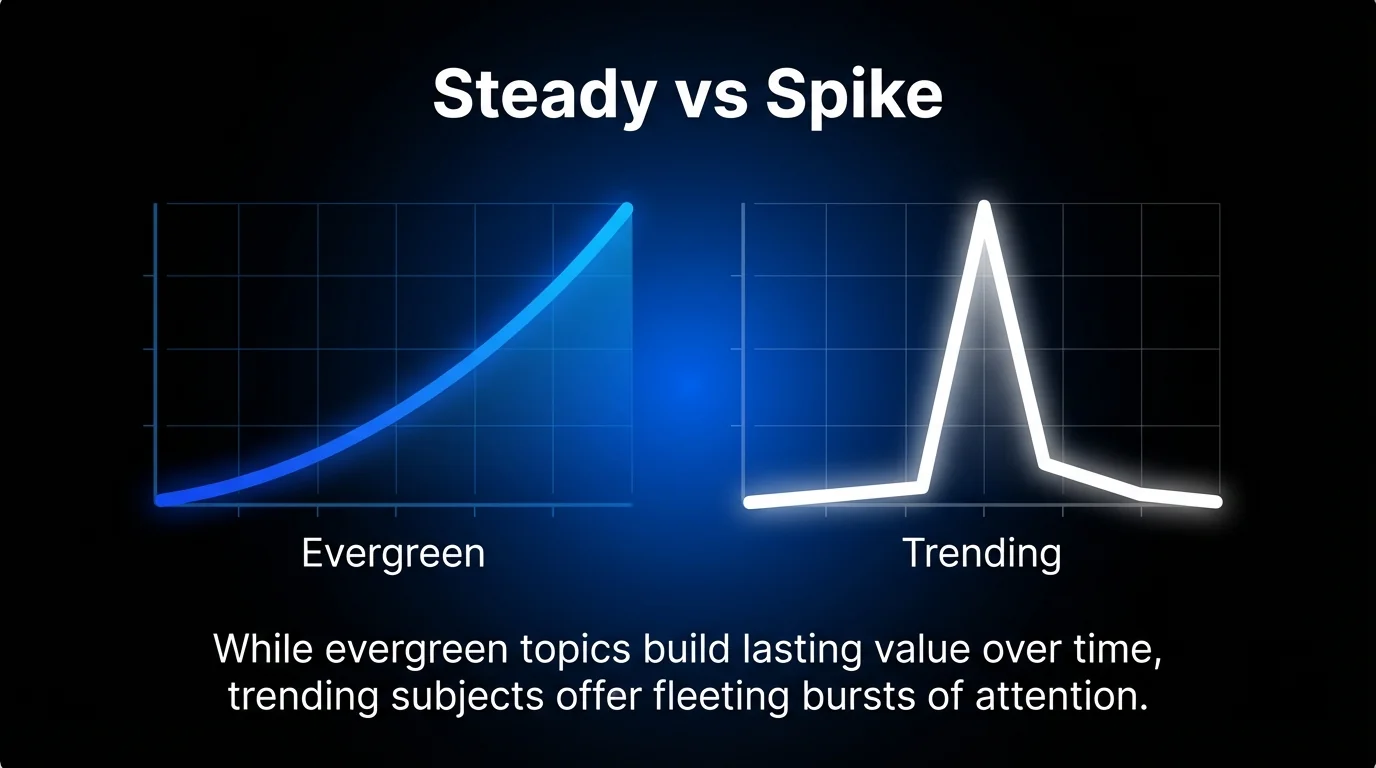
| Aspect | Evergreen Content | Trending Content |
|---|---|---|
| Time Relevance | Remains valuable indefinitely | Tied to specific moments or events |
| Traffic Pattern | Steady, accumulating over time | Sharp spike, then rapid decline |
| Creation Speed | Thorough research and depth prioritised | Quick turnaround essential |
| SEO Impact | Builds long-term authority and rankings | Temporary visibility boost |
| Update Frequency | Periodic refreshes maintain value | Rarely updated after publication |
| Resource Investment | Higher initial effort, lower ongoing | Constant new creation required |
Strategic Purpose Differences
Each content type serves distinct marketing objectives.
Evergreen content functions as infrastructure. It builds the foundation of organic visibility, establishes topical authority, and creates reliable traffic sources.
Trending content acts as amplification. It captures attention spikes, expands audience reach, and demonstrates industry engagement.
Neither type fully replaces the other. They serve complementary roles within comprehensive content strategies.
Measurement Differences
Success metrics differ significantly between content types.
For evergreen content, track cumulative traffic, ranking improvements, backlink acquisition, and long-term conversion rates. Results compound over months and years.
For trending content, measure peak traffic, social engagement, immediate conversions, and new audience acquisition. Results concentrate in days or weeks.
Applying the wrong metrics creates misleading conclusions. Expecting trending content to generate long-term traffic sets unrealistic expectations.
When to Use Evergreen Content
Certain situations and objectives particularly favour evergreen content approaches.
Understanding these scenarios helps you allocate resources effectively and set appropriate expectations.
Building Long-Term Organic Presence
When sustainable organic traffic is your priority, invest heavily in evergreen content.
This approach suits established businesses focused on reducing customer acquisition costs through owned channels. The initial investment in comprehensive evergreen material pays dividends for years.
Start with core topics central to your business. Create the definitive resources that become reference material for your audience.
Expand gradually to related topics, building topical authority across your subject area.
Limited Content Production Resources
Teams with constrained capacity benefit from evergreen focus.
If you can only produce one or two quality pieces monthly, evergreen content maximises the long-term value of that limited output.
Each piece continues working for you after publication, creating compounding returns without constant new creation.
Addressing Fundamental Audience Questions
When your audience consistently asks foundational questions, evergreen content serves them best.
These recurring information needs represent reliable content opportunities. Creating comprehensive answers generates consistent traffic from new audiences discovering your industry.
Educational content marketing particularly benefits from evergreen approaches.
Building Brand Authority
Establishing expertise and thought leadership requires evergreen content depth.
Comprehensive guides demonstrate subject matter mastery in ways that trending commentary cannot match.
Audiences judge expertise partly by the thoroughness and reliability of your content library. Evergreen material builds this perception effectively.
When to Use Trending Content
Specific circumstances and strategic objectives make trending content the right choice.
Recognising these scenarios helps you deploy trending approaches strategically rather than reactively.
Rapid Brand Awareness Building
New brands or those entering new markets benefit from trending content visibility.
The traffic spikes and social engagement help you reach audiences who haven’t discovered you through organic search.
This accelerated exposure complements longer-term evergreen strategies by generating immediate visibility whilst your foundational content builds authority.
Demonstrating Industry Engagement
B2B brands and professional services often need to signal active industry participation.
Commentary on current developments, new regulations, or industry changes demonstrates that you’re engaged with the field’s progress.
This relevance reassures potential clients that your expertise is current rather than dated.
Capitalising on Seasonal Opportunities
Businesses with seasonal products or services naturally align with trending content patterns.
Creating content around predictable annual events captures search demand when it peaks.
Tax professionals, retailers with holiday products, and event-based services all benefit from well-timed trending content.
Community Building and Engagement
Brands prioritising audience interaction find trending content effective for sparking conversations.
Current events and viral topics naturally generate discussion. Positioning yourself within these conversations creates engagement opportunities.
This approach particularly suits brands with strong social media presence where conversation and community matter as much as traffic.
Creating a Balanced Content Strategy
The most effective approach combines both content types strategically.
Rather than choosing between evergreen and trending content, successful marketers integrate both within a coherent strategy that leverages each type’s strengths.
The 80/20 Content Mix
Most content strategists recommend allocating approximately 80% of resources to evergreen content and 20% to trending topics.
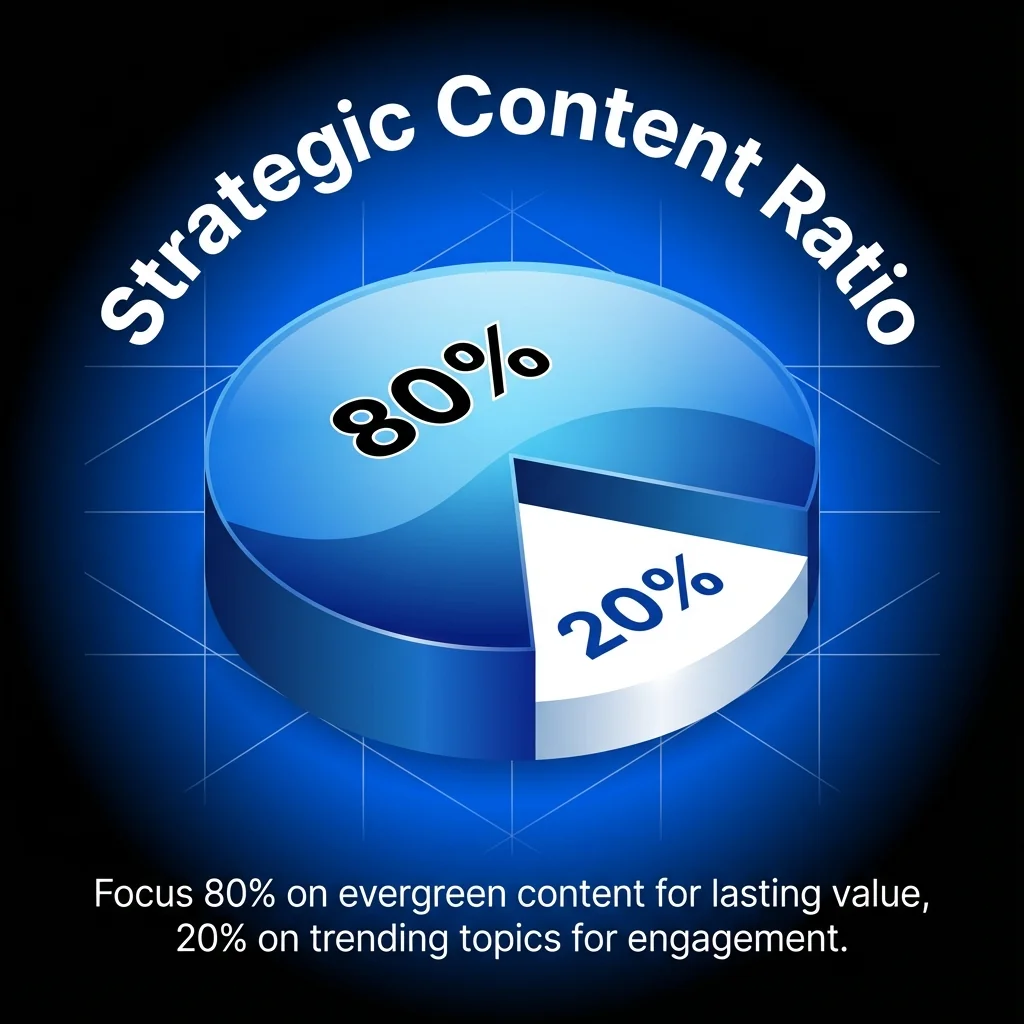
This ratio prioritises sustainable growth whilst maintaining the flexibility to capitalise on timely opportunities.
The exact percentage varies based on your industry, audience, and business objectives. News organisations might shift toward 60/40, whilst B2B service providers might use 90/10.
The key is establishing a deliberate ratio rather than reactively chasing every trending topic.
Strategic Content Calendar Planning
Implement a content calendar that accommodates both content types.
Schedule evergreen pieces with production timelines that allow thorough research and comprehensive coverage. These form your content backbone.
Reserve calendar capacity for trending opportunities. Build flexibility into your schedule so you can respond to relevant developments without disrupting evergreen production.
Consider seasonal trends predictable enough to plan for. Schedule relevant trending content before peak interest periods.
For more guidance on organising your content schedule effectively, explore our social media content calendar planning resources.
Evergreen Foundation with Trending Amplification
Use evergreen content as your strategic foundation, then amplify with trending pieces.
Create comprehensive evergreen resources first. These establish your authority and generate baseline organic traffic.
Then connect trending content back to your evergreen foundation. When publishing timely commentary, link to relevant evergreen guides for deeper context.
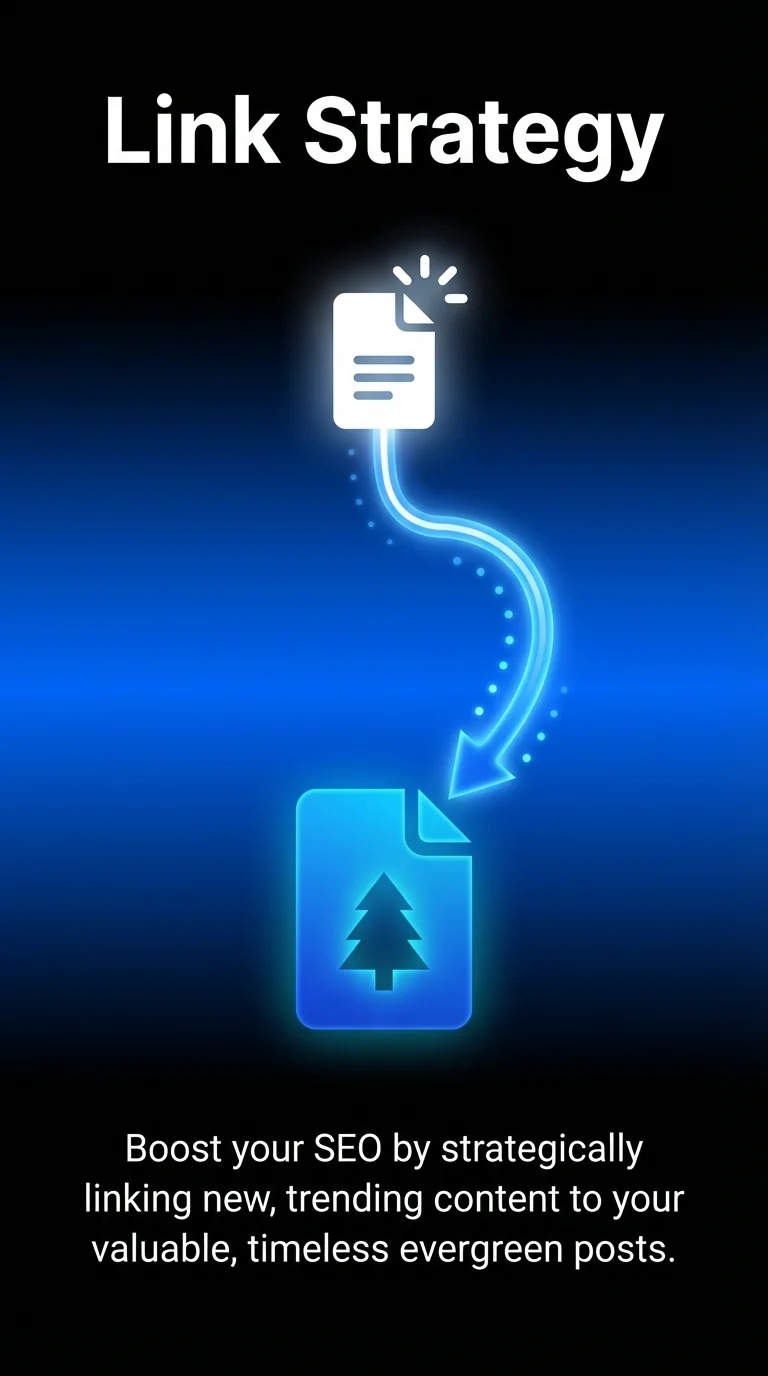
This approach maximises the value of both content types. Trending pieces drive immediate traffic, whilst internal links direct engaged visitors to evergreen material.
Updating Evergreen Content with Trending Elements
Bridge the gap between content types by adding trending examples to evergreen pieces.
Update existing evergreen guides with current examples, recent statistics, or timely case studies. This keeps the content fresh whilst maintaining its timeless core value.
These updates signal freshness to search engines, potentially boosting rankings without creating entirely new content.
Audience Segmentation Considerations
Different audience segments respond better to different content types.
New audiences discovering your brand often arrive through trending content that addresses their immediate interests.
Existing audiences seeking deeper expertise gravitate toward comprehensive evergreen resources.
Tailor your content mix to serve both segments. Trending content expands awareness, whilst evergreen material deepens engagement.
Learn more about understanding your audience through our guide on content types that drive engagement.
Implementing Your Mixed Content Strategy
Moving from theory to practice requires clear implementation steps.
Here’s how to put your balanced content strategy into action.
Audit Your Current Content
Start by analysing your existing content library.
Categorise each piece as primarily evergreen or trending. Calculate your current ratio.
Identify your top-performing evergreen content. What characteristics make these pieces successful? Look for patterns you can replicate.
Review trending content performance. Which trending pieces generated the best results? What topics resonated with your audience?
Develop Your Evergreen Content Plan
Create a prioritised list of evergreen topics to address.
Start with fundamental questions your audience consistently asks. These represent reliable content opportunities.
Research keyword volume and competition for each topic. Balance search potential against ranking difficulty.
Schedule evergreen content creation with realistic timelines. Quality matters more than speed for these foundational pieces.
For comprehensive guidance on planning your approach, see our content marketing strategy framework.
Build Trending Content Capacity
Establish systems for identifying and responding to trending opportunities.
Set up monitoring tools for industry news, social trends, and relevant search topics. Google Trends helps identify rising search interest.
Create rapid-response content templates. Pre-formatted structures speed up trending content production.
Define criteria for which trends warrant content. Not every trending topic deserves your attention. Focus on relevance to your audience and brand.
Measure and Adjust
Track performance metrics separately for each content type.
For evergreen content, monitor cumulative traffic growth, ranking improvements, and backlink acquisition over quarterly periods.
For trending content, measure peak traffic, engagement rates, and new audience acquisition during the first two weeks post-publication.
Review your content mix quarterly. Adjust the ratio based on performance data and strategic priorities.
Understanding the essential elements of successful content strategy helps refine your approach over time.
Quick Answers to Common Questions
What is the difference between trending content and evergreen content?
Trending content focuses on current events or viral topics, generating rapid, short-term engagement. Evergreen content remains relevant and valuable over time, consistently attracting organic traffic and building long-term authority without requiring frequent updates.
What is considered evergreen content?
Evergreen content refers to articles, guides, or resources that remain relevant and useful regardless of time. This includes tutorials, FAQs, and foundational how-to guides that consistently attract organic traffic and don’t become outdated quickly.
What is the meaning of trending content?
Trending content refers to material that gains rapid popularity due to current events, viral topics, or seasonal interest. This content drives immediate spikes in engagement and visibility but typically loses relevance as public interest shifts or fades.
Moving Forward with Your Content Mix
The evergreen versus trending content debate misses the point entirely.
Effective content marketing isn’t about choosing one approach over the other. It’s about strategically combining both types to serve different objectives within your broader marketing strategy.
Evergreen content builds your foundation. It creates sustainable organic visibility, establishes authority, and generates reliable long-term traffic. This content forms the backbone of your digital presence.
Trending content amplifies your reach. It captures attention spikes, expands audience awareness, and demonstrates industry engagement. These pieces complement your evergreen foundation by driving immediate visibility.
Start by assessing your current content mix. Calculate how much effort goes toward each content type. Then adjust deliberately toward a ratio that serves your strategic priorities.
Most organisations benefit from an 80/20 split favouring evergreen content. But your ideal balance depends on your industry, resources, and specific business objectives.
The key is making conscious strategic choices rather than reactively chasing every trending topic that appears.
Build your evergreen foundation first. Create comprehensive resources that address your audience’s fundamental needs. Then selectively pursue trending opportunities that align with your brand and expertise.
For additional guidance on developing your complete content approach, explore our resources on content marketing strategy and content marketing planning.
Your content strategy deserves the same balanced thinking you apply to other business decisions. Combine short-term tactics with long-term investments, and you’ll build sustainable marketing performance.
